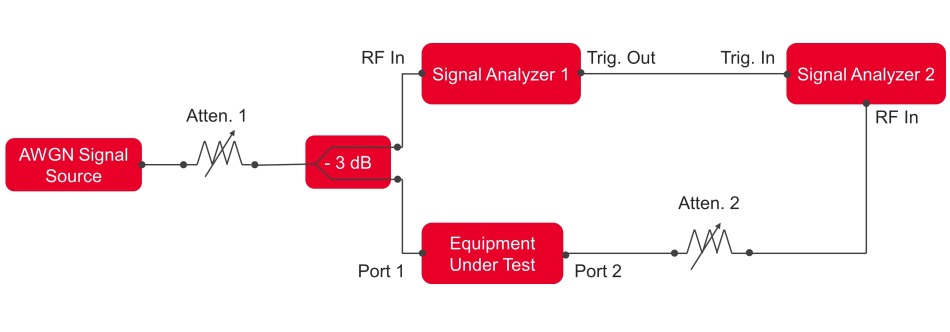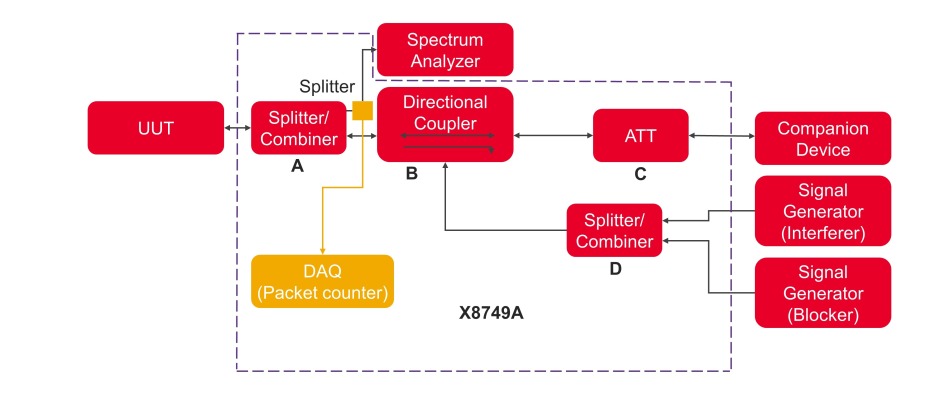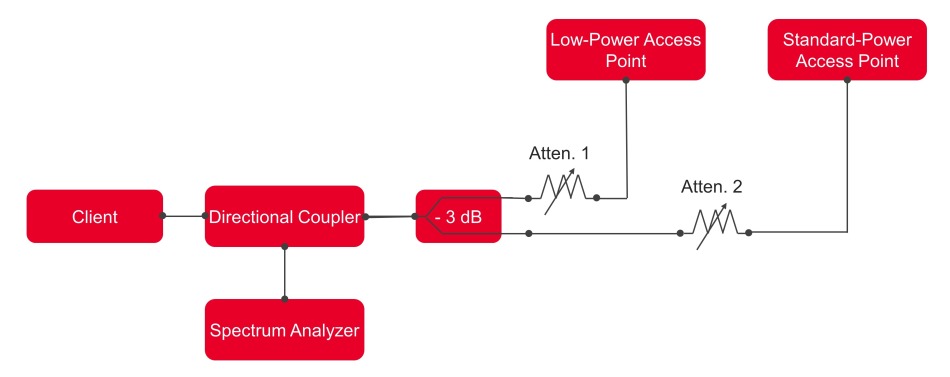What's new in Wi-Fi - 6E networks? Need more interference testing


Just like cellular standards, Wi-Fi standards are constantly evolving. Wi-Fi 6E is the latest product out there. The standard enables wireless Internet of Things (IoT) devices to operate in the unlicensed 6 GHz spectrum to access more bandwidth.
But there's a tricky part: The 6 GHz spectrum imposes new constraints on device makers. Why? Because many devices are already using the 6 GHz band. Therefore, Wi-Fi 6E needs new tests to prevent interference.
First, let's quickly review the Wi-Fi standard to position Wi-Fi 6E in the standard evolution.
Wi-Fi is not a new technology. The first Wi-Fi standard appeared in 1997. Over the years, link rates have increased from 1 to 2 Mbps to 600 to 9,608 Mbps, but mostly use the same frequency bands. Wi-Fi 6E uses new spectrum for the first time in the standard's history.
Wi-Fi 6E is an extension of Wi-Fi 6, also known as 802.11ax. Wi-Fi 6 uses Orthogonal Frequency Division Multiple Access (OFDMA) technology to improve network performance and higher-order Quadrature Amplitude Modulation (QAM) formats to increase data rates. Wi-Fi 6 devices operate in the 2.4 and 5 GHz bands, while Wi-Fi 6E operates in the unlicensed 6 GHz spectrum.
The 6 GHz band has more available bandwidth. For example, these devices have access to 1,200 MHz of continuous bandwidth in the United States and regions regulated by the Federal Communications Commission (FCC), and 480 to 500 MHz in Europe and regions regulated by the European Telecommunications Standards Institute (ETSI) from the Radio Equipment Directive (RED).
prevent interference
The additional bandwidth available in the 6 GHz band offers great potential for device manufacturers to deliver higher performance and new applications to end users. Wi-Fi 6E brings consumers faster, more reliable internet access for video streaming, online gaming and video calling. The standard is also particularly helpful for businesses to accelerate their digital transformation.
First, IT departments can increase productivity and innovation by allowing more devices to connect to their networks and improving the user experience. High-density environments such as airports, stadiums, convention centers, and educational and medical facilities can also benefit greatly from Wi-Fi 6E, as it enables them to handle a greater number and variety of devices.
However, taking advantage of the additional bandwidth available in the 6 GHz spectrum is not without its challenges. A major concern is that many users are already using the spectrum, including 5G cellular, Wi-Fi access points, satellite links, mobile TV broadcasts and utility communication links. Also, existing operators take precedence over other users. As a result, the FCC and ETSI require several new tests to ensure efficient use of the spectrum.
Below is an overview of the new tests deemed necessary to protect Wi-Fi 6E setups from interference.
- Contention Based Protocol (CBP) testing
CBP testing is an important new item mandated by the FCC. It is named after the use of CBP in equipment to prevent interference with existing carriers' services. The FCC requires all classes of equipment (access points and clients) to pass and pass this test.
Figure 1 shows the CBP test setup. This setup consists of two signal analyzers and an additive white Gaussian noise (AWGN) signal source that produces 10 MHz wide noise (the existing signal) for the test signal. This test also requires the client device to communicate with the device under test (not shown) and the signal conditioning components. For a 20 MHz channel, the signal source needs to inject the existing signal at one frequency within the channel, while for a 160 MHz channel, the signal source needs to inject the existing signal at three different frequencies within the channel.

Figure 1 This figure shows the conducted CBP test setup. Source: KDB 987594 D02 V01r01
- Adaptation/Channel Access Mechanism (CAM) testing
The FIT/CAM test is the ETSI equivalent of the FCC CBP test, although much more complex. It focuses on the automatic mechanism by which listen-before-talk (LBT) devices check the channel before transmitting data. The standard also requires devices to check the probability of other devices using the channel to ensure fair use of the available channels.
CAM testing is complex and time-consuming because it requires extensive data processing to calculate results. Quantifying the probability of other devices using the channel of interest requires dividing the minimum idle time by the maximum channel occupancy time (COT), which varies by device class. COT measurements can require large numbers of samples. For example, a load-based equipment (LBE) may require more than 10,000 samples with a resolution of 1 microsecond or less, which results in many data points being measured and collected.
Suitability testing also includes performing interference analysis by injecting various signals into the device to evaluate its ability to detect and respond to these signals. This test requires 5G New Radio (NR) waveforms to simulate interference from 5G users. You also need a known signal level and bandwidth, and apply the results of the occupied channel bandwidth (OCB) test performed earlier.
- Receiver Selectivity Test
Formerly known as the Receiver Adjacent Channel Selectivity Test, Receiver Selectivity is another new interference-related test from ETSI. It consists of measuring the ability of a device to receive a useful signal on its channel without more than a certain degree of degradation due to the presence of interfering signals in adjacent channels.
The test consists of three main steps. The first step is to determine the minimum power value (P min ) of the device signal with a packet error rate (PER) of just under 10% . The next step is to add interference in the upper channel (above 20 and 40 MHz) and check that the PER of the device is less than or equal to 10%. The final step consists of adding interference in the channels below (below 20 and 40 MHz) and checking the PER again.
Figure 2 shows the setup for receiver selectivity testing. It includes passive components and may require a shielded room or Faraday cage. A variable attenuator and a packet measurement system are also required to find the Pmin value and determine the PER. Using signal conditioning components and packet counters makes testing more manageable with just a few front panel connections.

Figure 2 The receiver selectivity test setup described above uses the X8749A signal conditioning test setup and packet counter. Source : Keysight Technologies
- Dual client test
The dual client test is another new test, but from the FCC. Because client devices can connect to standard-power access points, low-power indoor access points, or both, the FCC requires this test to verify that client devices that can flexibly connect to both types of access points are capable of Switch seamlessly between the two . Dual-client testing verifies that these client devices can distinguish between different access point configurations and control their respective power levels.
Figure 3 shows the connected dual client test setup. This test will require Gold Class Low Power and Standard Power Access Points, variable attenuators and signal conditioning components.

Figure 3 The dual client connectivity test verifies that client devices can distinguish between different access point configurations. Source: Keysight Technologies
Troubleshoot interference in Wi-Fi 6E devices
Wi-Fi 6E is an exciting new addition to the Wi-Fi standards landscape. The vast amount of additional bandwidth at the manufacturer's fingertips provides end users (consumers and businesses) with higher performance and new applications. The standard also brings new challenges, mainly because it uses the 6 GHz spectrum. The 6 GHz band is already used by many other devices, including incumbent carriers that take precedence over other users. Therefore, new tests are required to prevent interference.
For more information on these tests, measurement examples, and to understand other new test requirements for Wi-Fi 6E devices, watch the webinar " Understanding Regulatory Testing for Wi-Fi 6E Devices ".